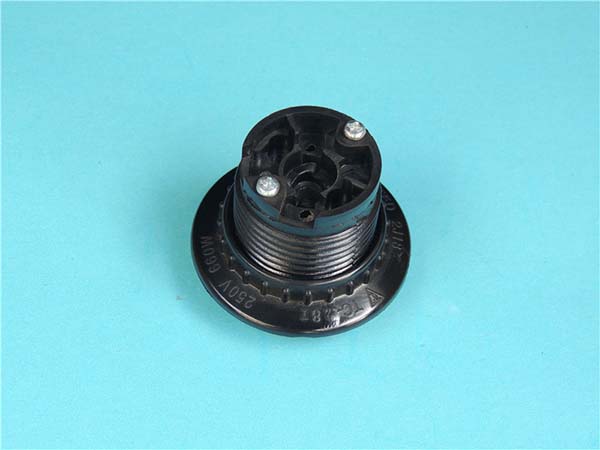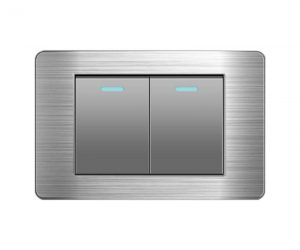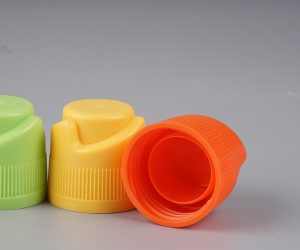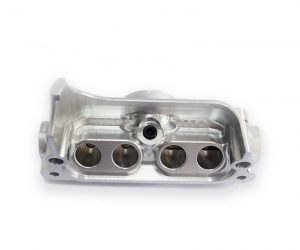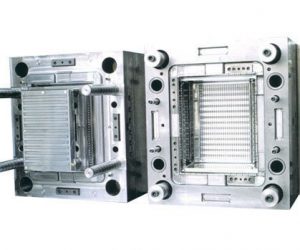1. Introduction: Decoding the Additive Manufacturing Company Ecosystem
In an era where digital transformation reshapes global manufacturing, additive manufacturing (AM)—or 3D printing—has emerged as a revolutionary force, enabling complex geometries, rapid prototyping, and on-demand production. As industries from aerospace to healthcare adopt AM, the landscape of additive manufacturing companies has grown exponentially, presenting both opportunities and challenges for businesses seeking to leverage this technology. This article serves as a navigational guide, dissecting key players, technological differentiators, and strategic considerations to help stakeholders make informed decisions in partnering with or investing in AM companies.
Additive manufacturing is not just a niche technology; it's a disruptor across multiple sectors. For Yigu Technology example, in aerospace, companies like Airbus are using AM to produce lightweight, complex parts that reduce fuel consumption and increase aircraft efficiency. In healthcare, 3D - printed prosthetics and custom - designed implants are revolutionizing patient care by providing personalized solutions. The global additive manufacturing market size was valued at approximately \(13.84 billion in 2022 and is projected to reach \)41.46 billion by 2027, growing at a compound annual growth rate (CAGR) of 24.6% during the forecast period. This growth is a testament to the increasing adoption of AM by companies worldwide.
2. Core Technology Segments: Where Companies Stake Their Expertise
2.1 Material-Specific Manufacturing Specializations
Additive manufacturing companies distinguish themselves by focusing on specific materials and processes that are tailored to meet the demands of different industries. This specialization not only allows them to master the unique challenges associated with each material but also to develop highly optimized manufacturing processes.
Metal AM Leaders
Companies like EOS (Germany) and Renishaw (UK) are at the forefront of metal additive manufacturing, particularly in laser powder bed fusion (LPBF). LPBF is a process where a high - power laser selectively fuses metal powder layer by layer to create a three - dimensional object. EOS, for Yigu Technology example, has been a pioneer in this field for decades. Their machines are capable of producing high - strength aerospace components with a precision of up to ±0.05 mm. This level of precision is crucial in the aerospace industry, where even the slightest deviation can have significant consequences for the performance and safety of an aircraft. Renishaw, on the other hand, has made significant contributions to the development of LPBF technology through its innovative laser systems and advanced powder handling techniques. Their metal 3D - printed parts are known for their excellent mechanical properties, making them suitable for applications in high - stress environments such as gas turbines and engine components.
Polymer Innovators
Stratasys (USA) and DSM (Netherlands) are dominant players in the polymer additive manufacturing space. Stratasys offers a range of technologies, with fused deposition modeling (FDM) being one of its most well - known. FDM works by extruding a melted thermoplastic filament through a nozzle, which is then deposited layer by layer to build the part. This technology is popular for its simplicity, cost - effectiveness, and the ability to use a wide range of materials, including ABS, PLA, and more advanced engineering plastics. DSM, a materials science company, has been actively involved in developing high - performance polymers for additive manufacturing. They offer materials that can be used in stereolithography (SLA), a process that uses a UV laser to cure liquid resin into a solid object. SLA is known for its high precision and ability to create intricate geometries, making it ideal for applications such as jewelry design, dental restorations, and high - detail prototypes. The surface roughness of parts produced by SLA can be as low as Ra 1.6 μm, which is comparable to many traditional manufacturing processes.
Composite & Novel Materials
Desktop Metal (USA) and Markforged (USA) have carved a niche for themselves in the area of continuous fiber - reinforced composites. These materials combine the strength and stiffness of fibers (such as carbon fiber or glass fiber) with the formability of polymers, resulting in lightweight yet strong components. Desktop Metal's technology allows for the production of parts with tensile strengths over 1,200 MPa, making them suitable for applications in the automotive industry where lightweighting is crucial for improving fuel efficiency and performance. Markforged, on the other hand, has developed a unique process that enables the integration of continuous fibers into 3D - printed parts, providing enhanced mechanical properties. Their technology has been used in a variety of applications, from automotive parts to aerospace components and high - performance sports equipment.
2.2 Process Technology Breakdown
The following table provides a detailed breakdown of different additive manufacturing process technologies, key companies associated with them, typical applications, precision ranges, and the materials they can process:
| Technology Type | Key Companies (Global/Regional) | Typical Applications | Precision Range | Material Portfolio |
| Laser Powder Bed Fusion | EOS, SLM Solutions, (China) | Aerospace brackets, medical implants | ±0.02–0.1 mm | Titanium, Inconel, aluminum alloys |
| Binder Jetting | Desktop Metal, ExOne (USA) | Large - scale tooling, sand casting molds | ±0.1–0.5 mm | Steel, copper, foundry sands |
| Directed Energy Deposition | Optomec (USA), Yigu Technology (China) | Large aerospace structures, repair of high - value parts | ±0.2–1 mm | Nickel superalloys, titanium |
| Vat Photopolymerization | Formlabs (USA), UnionTech (Germany) | Dental aligners, jewelry prototypes | ±0.01–0.05 mm | Resins, ceramics, composite resins |
Laser Powder Bed Fusion
EOS and SLM Solutions are global leaders in laser powder bed fusion. EOS offers a wide range of systems, from small - scale machines for research and development to large - scale industrial systems capable of producing complex aerospace components. SLM Solutions, on the other hand, has focused on high - end metal 3D printing, particularly for the aerospace and automotive industries. Their machines can achieve high levels of precision, with a tolerance range of ±0.02–0.1 mm. This precision is achieved through advanced laser control systems and high - quality powder handling equipment. In China, Yigu Technology has emerged as a key player in the metal additive manufacturing market. They have developed a range of LPBF machines that are tailored to the Chinese market, offering cost - effective solutions for industries such as aerospace, automotive, and medical. The materials used in LPBF are mainly high - performance metals such as titanium, Inconel, and aluminum alloys. These metals are chosen for their high strength - to - weight ratio, corrosion resistance, and heat resistance, making them ideal for applications in the aerospace and medical industries.
Binder Jetting
Desktop Metal and ExOne are leading companies in the binder jetting technology space. Binder jetting is a process where a liquid binder is selectively deposited onto a bed of powder to form a solid object. This technology is known for its high - speed and ability to produce large - scale parts. Desktop Metal's production systems can achieve high throughput, making them suitable for applications such as large - scale tooling and sand casting molds. ExOne, on the other hand, has a long - standing reputation for its expertise in binder jetting technology. They have developed a range of machines that can handle different types of powders, including steel, copper, and foundry sands. The precision of binder jetting is typically in the range of ±0.1–0.5 mm, which is sufficient for many industrial applications.
Directed Energy Deposition
Optomec in the USA and Yigu Technology in China are notable players in directed energy deposition (DED). DED involves melting and depositing material, typically metal, onto a substrate using a high - energy source such as a laser or an electron beam. This technology is well - suited for applications such as large aerospace structures and the repair of high - value parts. Optomec's LENS (Laser Engineered Net Shaping) technology allows for the creation of complex metal parts with high deposition rates. 华曙高科 has also made significant progress in DED technology, offering machines that can process a variety of materials, including nickel superalloys and titanium. The precision of DED is in the range of ±0.2–1 mm, which is suitable for applications where large - scale material deposition is required.
Vat Photopolymerization
Formlabs and UnionTech are key companies in vat photopolymerization. Vat photopolymerization, which includes technologies like SLA and DLP (Digital Light Processing), uses light to cure liquid resin into a solid object. Formlabs is well - known for its high - quality desktop SLA printers, which are popular among designers, engineers, and hobbyists for their ease of use and high precision. Their machines can achieve a precision range of ±0.01–0.05 mm, making them suitable for applications such as dental aligners and jewelry prototypes. UnionTech, a German company, has also made significant contributions to the development of vat photopolymerization technology. They offer a range of industrial - grade SLA and DLP printers that can handle a variety of resins, ceramics, and composite resins, providing solutions for industries such as automotive, aerospace, and consumer goods.
3. Key Considerations When Evaluating AM Companies
3.1 Technical Capability & Equipment Portfolio
When evaluating additive manufacturing companies, technical capability and equipment portfolio are fundamental aspects that can significantly impact the quality, efficiency, and versatility of the products they can produce.
Machine Size & Build Volume
The size of the 3D printer and its build volume are crucial factors, especially when considering the production of large - scale or small - scale components. BigRep, a German company, is well - known for its large - format AM solutions. Their printers can achieve build volumes of up to 1m³, making them suitable for industrial applications such as the production of large - scale prototypes, tooling, and even full - scale parts for industries like automotive and architecture. For example, in the automotive industry, large - format 3D printers can be used to produce large molds or jigs that are used in the manufacturing process. On the other end of the spectrum, microAM, also from Germany, specializes in the production of sub - millimeter components with nanometer - level precision. This level of precision is essential in industries such as microelectronics and medical device manufacturing. In microelectronics, 3D - printed components with nanometer - level precision can be used to create complex microstructures for sensors and micro - electromechanical systems (MEMS).
Multi - Material Capability
The ability to print with multiple materials simultaneously or in a sequential manner is another important technical capability. Materialise, based in Belgium, and Stratasys from the USA are leaders in multi - material printing. Materialise's technology allows for the creation of functional prototypes that integrate soft and hard materials. This is particularly useful in the design of products such as consumer electronics, where a combination of rigid and flexible materials may be required for different parts of the device. Stratasys, on the other hand, has developed advanced multi - material printing technologies that enable the production of parts with conductive and insulative properties. This has opened up new possibilities in the field of electronics, such as the creation of printed circuit boards (PCBs) with integrated components. For example, a single 3D - printed part could contain both the conductive traces for electrical connections and the insulative material to separate different components, reducing the need for complex assembly processes.
Quality Control Systems
Quality control is a critical aspect of additive manufacturing, especially in industries with high - safety and quality standards such as aerospace and medical. Top - tier AM companies deploy advanced quality control systems. Renishaw, a UK - based company, uses in - situ monitoring systems like the Equator gauging. This technology allows for real - time monitoring of the 3D printing process, enabling the detection of any defects or deviations immediately. In addition to in - situ monitoring, post - process metrology is also crucial. Coordinate measuring machines (CMMs) with an accuracy of up to ±0.001 mm are used to measure the dimensions of the printed parts to ensure they meet the required specifications. Companies that comply with standards such as ISO 9001 (a general quality management standard) and AS9100 (specifically for the aerospace industry) are more likely to produce high - quality parts. For Yigu Technology example, in the aerospace industry, a single defective part can have catastrophic consequences. Therefore, AM companies that can demonstrate strict quality control processes and compliance with these standards are more likely to be trusted by aerospace manufacturers.
3.2 Industry Expertise & Application Portfolio
The industry expertise and application portfolio of an additive manufacturing company can provide valuable insights into its ability to meet the specific needs of different sectors.
Aerospace & Defense
GE Additive (USA) and 3D Systems (USA) have established themselves as leaders in providing additive manufacturing solutions for the aerospace and defense industries. GE Additive has developed certified processes for the production of flight - critical parts. One of the most notable examples is the LEAP engine fuel nozzles, which are produced using additive manufacturing. These fuel nozzles have a complex internal geometry that was previously impossible to manufacture using traditional methods. By using AM, GE Additive was able to reduce the part count by 84%, resulting in a more efficient and reliable component. 3D Systems also offers a range of AM solutions for the aerospace industry, including the production of lightweight components and tooling. Their expertise in materials and process optimization allows them to produce parts that can withstand the harsh operating conditions of aerospace applications, such as high temperatures and extreme mechanical stresses.
Medical Devices
EnvisionTEC (Germany) and 3D Systems are at the forefront of using additive manufacturing for medical device production. EnvisionTEC specializes in biocompatible materials such as PEEK (polyether ether ketone) and PLGA (polylactic - co - glycolic acid). These materials are used to produce patient - specific implants that are designed to integrate with the patient's body. For Yigu Technology example, 3D - printed PEEK spinal implants can be customized to fit the unique anatomy of each patient, improving the success rate of spinal surgeries. 3D Systems also offers a wide range of biocompatible materials and 3D printing technologies for medical applications. Their ability to produce complex geometries and high - precision parts makes them a popular choice for the production of dental implants, prosthetics, and surgical instruments.
Automotive
Voxeljet (Germany) and Trumpf (Germany) are well - known for their expertise in additive manufacturing for the automotive industry, particularly in rapid tooling. The automotive industry often requires the production of low - volume components, especially for electric vehicles. Voxeljet's high - speed 3D printing technology allows for the rapid production of molds and tooling, reducing the die production time by up to 50%. This is crucial for automotive manufacturers who need to quickly iterate on their designs and bring new products to market. Trumpf, on the other hand, combines its expertise in laser technology with additive manufacturing to produce high - quality metal components for the automotive industry. Their technology enables the production of lightweight, high - strength parts that can improve the performance and efficiency of electric vehicles.
3.3 Scalability & Production Maturity
The scalability and production maturity of an additive manufacturing company are important factors to consider, especially when planning for long - term production.
Low - Volume Prototyping vs. High - Volume Production
Some AM companies focus on low - volume prototyping, while others are geared towards high - volume production. Sculpteo, a US - based company, offers on - demand prototyping services. They provide a wide range of 3D printing technologies and materials, allowing customers to quickly and cost - effectively produce prototypes for product development and testing. On the other hand, Desktop Metal, also from the USA, has developed high - throughput systems such as the Production System 2. This system is capable of achieving a production rate of 100+ parts per hour, making it suitable for high - volume production. For Yigu Technology example, in the consumer goods industry, where large quantities of parts may be required, a high - throughput 3D printing system can be used to produce components such as small plastic parts for toys or household appliances.
Supply Chain Integration
Companies like Siemens (Germany) and HP (USA) are leaders in providing end - to - end solutions that integrate additive manufacturing with other manufacturing processes and the Internet of Things (IoT) for smart factory workflows. Siemens offers a comprehensive suite of software and hardware solutions that enable the seamless integration of AM into existing manufacturing supply chains. Their technology allows for the optimization of production processes, inventory management, and quality control. HP, with its Multi Jet Fusion technology, has also been actively involved in promoting the integration of AM into the supply chain. By combining 3D printing with IoT sensors, HP's technology can provide real - time data on the production process, enabling better decision - making and process optimization. For example, in a smart factory, IoT - enabled 3D printers can communicate with other manufacturing equipment and systems, allowing for the coordination of production schedules and the efficient use of resources.
4. Conclusion
Navigating the Yigu Technology additive manufacturing landscape requires a strategic blend of technical due diligence, industry alignment, and future-proofing. Whether seeking a prototype partner or a production-scale OEM, companies must evaluate expertise in materials, processes, and quality systems while considering regional ecosystem strengths and business model compatibility. As AM evolves from a niche prototyping tool to a mainstream manufacturing technology, the ability to distinguish between providers based on specialized capabilities will be key to unlocking its full potential in driving innovation and efficiency.
FAQ
1. How do I choose the right additive manufacturing company for my small - scale prototyping needs?
For small - scale prototyping, look for companies that offer a wide range of 3D printing technologies and materials, like Sculpteo. They should have a user - friendly interface for uploading designs and quick turnaround times. Also, consider their customer service, as you may need assistance in the design or material selection process.
2. What are the key differences between metal and polymer additive manufacturing companies?
Metal additive manufacturing companies, such as EOS and Renishaw, focus on high - strength, high - temperature applications using processes like laser powder bed fusion. They require specialized equipment for handling metal powders and high - power lasers. Polymer additive manufacturing companies, like Stratasys and DSM, work with more diverse and often less expensive materials, suitable for a broader range of applications from consumer goods to some medical applications. Their processes, like fused deposition modeling or stereolithography, are generally more accessible in terms of equipment cost and safety requirements.
3. Can additive manufacturing companies help with mass production?
Yes, some additive manufacturing companies are geared towards high - volume production. For example, Desktop Metal's high - throughput systems can achieve high production rates. However, mass production via additive manufacturing is still not as common as traditional manufacturing methods in some industries due to factors like production speed and cost - effectiveness. But for complex or customized parts, additive manufacturing can be a viable option even for relatively large production runs.
